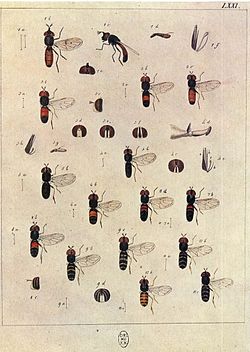| Paragus | |
|---|---|
 | |
| Paragus sp | |
| Scientific classification | |
| Domain: | Eukaryota |
| Kingdom: | Animalia |
| Phylum: | Arthropoda |
| Class: | Insecta |
| Order: | Diptera |
| Family: | Syrphidae |
| Subfamily: | Syrphinae |
| Tribe: | Syrphini |
| Genus: | Paragus Latreille, 1804 |
| Type species | |
| Syrphus bicolor [1] Fabricius, 1794 | |
Paragus is a genus of hoverflies. [2] [3]
